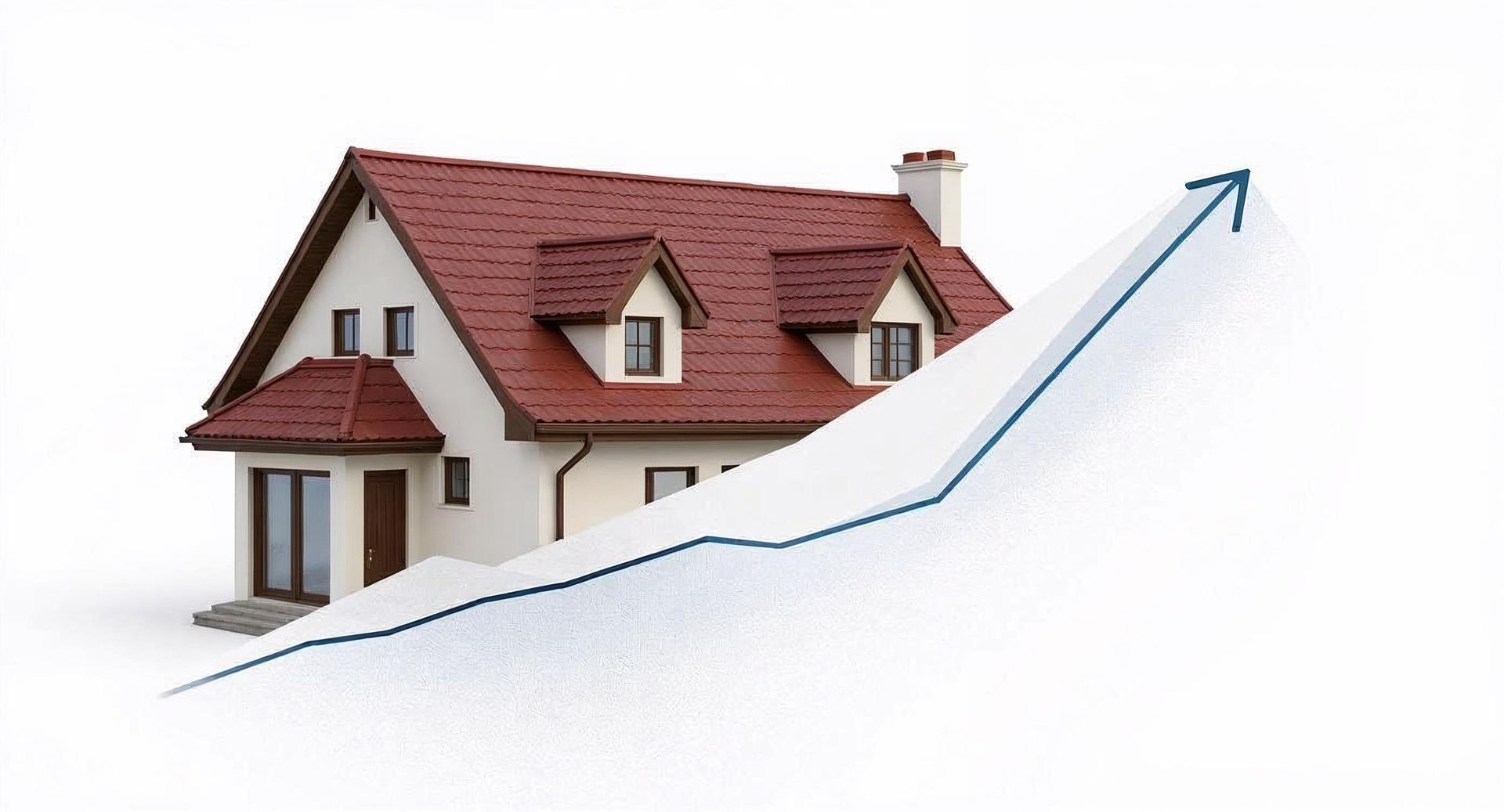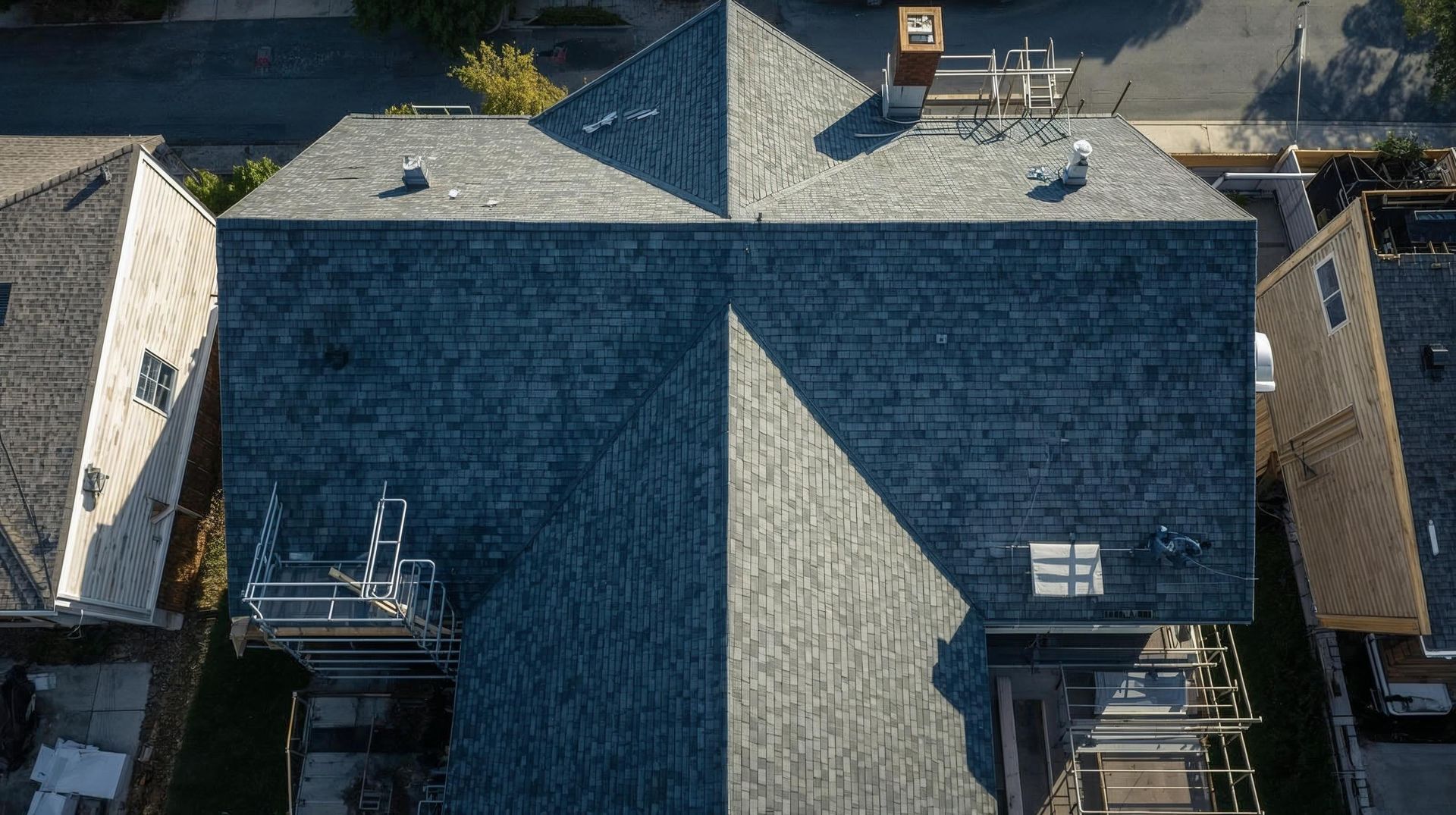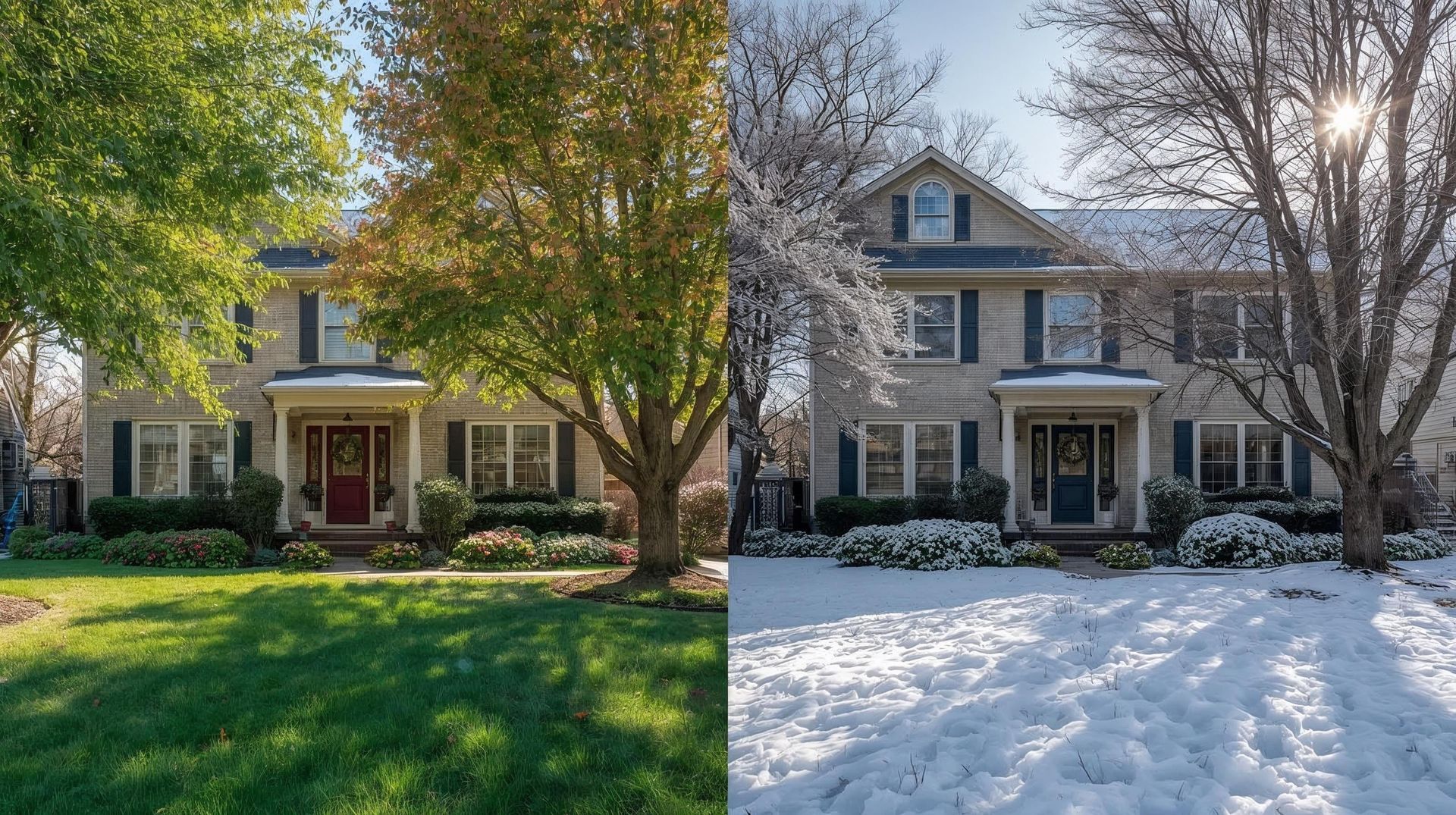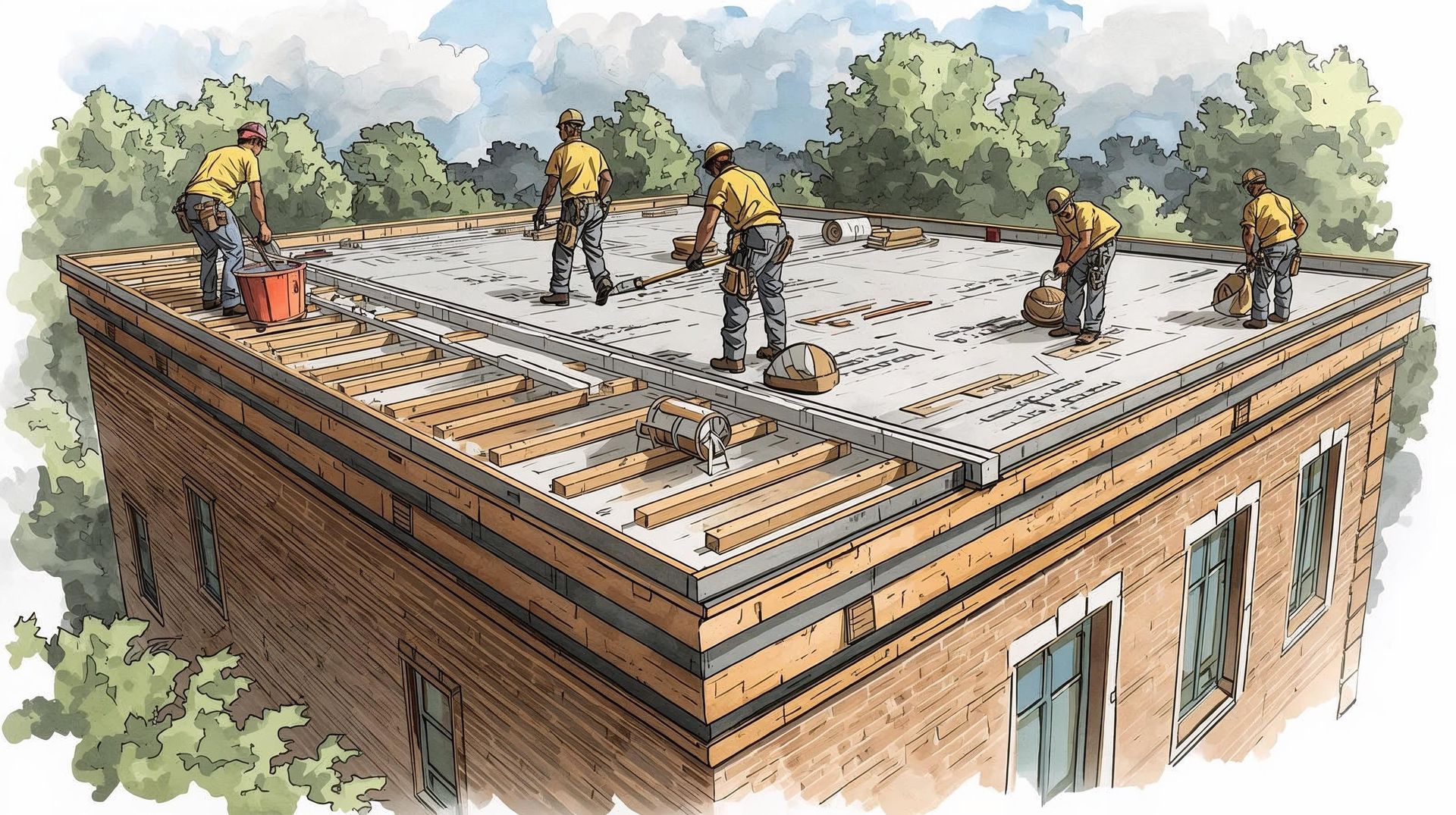The Best Time of Year to Replace Your Roof: A Seasonal Guide
- The best season to replace depends on the climate, your roof’s age, and the contractor’s availability.
- Fall and spring seasons are often the ideal times of the year to replace a roof for many homeowners due to moderate weather conditions.
- The summer season offers predictable weather, but it may coincide with the busy season and higher costs. Late summer can present higher temperatures than ideal for less-experienced roofers.
- Winter Replacement can work in mild climates or for urgent roof repair, but cold temperatures may cause replacement issues.
- Planning roof replacement projects ensures access to materials, contractors, and optimal installation conditions.
- A properly timed roof replacement process can prevent water damage, architectural damage, and frequent repairs down the road.
Does the season really decide the best time to replace a Roof?
Replacing your roof isn’t just a DIY decision; it’s a strategic home improvement approach. A leaking roof won’t wait for the right season to arrive, but that doesn’t mean you should rush your replacement process. Climate, contractor’s availability, and roofing materials all play a role in how successful your roof replacement will be.
Roofing projects are extremely weather-dependent. Asphalt, wood shingles, and even metal roofing systems perform best when installed under specific conditions. Too cold, and shingles may crack. Too hot, and the tar sealant may not set properly. Too wet and heavy rainfall may cause inclement weather delays.
Timing your roof replacement wisely can mean:
- Fewer installation issues
- Lower labor costs due to off-season discounts
- Longer lifespan for your new roof
- Better curb appeal with proper installation
Planning roof replacement projects ensures access to materials, a roofing specialist, and optimal installation conditions. For more information on what you’re likely to pay this year, check How Much Does It Cost to Replace a Roof in 2025? to see the latest average costs and factors.
Let’s look at every season closely to see what fits right for your home improvement projects.
1. Spring: A Season of Renewal
Late spring is a wonderful time for home improvement projects like roof replacement since the climate is warming up and contractors’ schedules start filling. After winter, many homeowners notice a damaged roof showing wear and tear from snow, ice dams, high winds, and falling debris. Spring’s moderate weather conditions are ideal for handling asphalt shingles and other roofing materials safely.
Spring often reveals the damage your roof has endured. Many homeowners schedule roof replacement in this season to address these problems before summer storms and extreme climatic hit.
Perks you might consider for Spring Roof Replacement:
- Mild climatic conditions (45–70°F) make it easier for a roofing specialist to manage shingles and adhesives.
- Roof repairs and the replacement process before heavy rainfall prevent further damage.
- Contractors’ schedules are more open compared to the summer busy season.
- Preventive replacements now can help avoid energy efficiency issues later.
Challenges of Spring:
- Unpredictable rainfall can delay projects.
- High demand from homeowners repairing winter storm damage may create scheduling issues.
- Early spring may still have occasional frost in colder climates.
This season is ideal for many homeowners looking to replace a roof after winter damage while taking advantage of comfortable temperatures and moderate climatic conditions.
2. Summer: The Busy Roofing Season
Summer is widely considered the peak roofing season due to warm, dry, and predictable climatic conditions. Roofing specialists often find the summer season a busy time, but longer daylight hours make it efficient for completing roofing projects.
Pros of Summer Roof Replacement:
- Warm and dry conditions reduce installation problems caused by moisture.
- Long daylight hours allow more time for roofing services.
- Asphalt shingles bond well in hot temperatures because of tar sealant activation.
- Late summer is ideal for tackling large roofing projects.
Challenges in Summer:
- High demand increases the cost of roofing services.
- Extreme heat in some regions may cause roof installation problems.
- Many roofing companies are booked months in advance.
- Inclement weather, such as a storm, can interrupt the replacement process.
High demand increases the cost of roofing services. If you want to save, see What’s the Cheapest Way to Replace a Roof? for tips on affordable materials and cost-saving strategies without sacrificing durability.
Summer provides a reliable climate for roof replacement, but homeowners should expect higher costs and the busy season for specialists.
3. Fall: The Goldilocks Season
Many roofing experts call fall the best season to replace a roof. Temperatures are cooler than in summer, yet the climate is typically dry and stable. Fall roof replacement gives the opportunity to complete installation before winter climate strikes.
Pros of Fall Roof Replacement:
- Cool temperatures allow adhesives and roofing materials to set properly.
- Installing before the winter season protects against snow, cold weather, and architectural damage.
- It is often the last chance to schedule work before contractors’ year-end availability ends.
- Many homeowners find that replacing a roof in the fall minimizes further damage.
Challenges in Fall:
- Contractors’ schedules can be competitive.
- Early frost or bad weather may disrupt roof installation.
- One downside is that roofing companies are often fully booked.
- Fall roof replacement combines optimal time, installation quality, and preparation for winter, making it the best season for long-term structural integrity.
4. Winter: Off-Season but Doable
Replacing a roof in the winter season is possible, but requires careful seasonal considerations. Cold temperatures, freezing temperatures, and snow can affect roof installation and roofing materials. The winter months are a slower time for many roofing companies, which can work to your advantage if you need a new roof quickly.
Pros of Winter Roof Replacement:
- Off-season projects often come with discounts on labor and materials, potentially saving homeowners money.
- Roofing contractors have more availability, allowing for faster scheduling of urgent projects.
- Ideal for roofs with severe damage that cannot wait for the right season, such as multiple leaks, buckled shingles, or structural issues.
- Some materials, like metal roofing systems, can be installed efficiently even in cold temperatures.
Challenges in Winter:
- Winter is often a slower time for roofing companies.
- Asphalt shingles and adhesives may not bond properly in freezing temperatures, leading to potential leaks or premature damage.
- Ice, snow, and moisture can make work hazardous and slow installation.
- Winter weather can cause delays and increase labor costs due to unsafe conditions.
- Extra precautions may be needed to protect the roof decking and underlying structures from water damage.
Waiting to replace a roof during winter emergencies beyond a certain point can greatly increase the risk of water intrusion, ice damage, and other issues that may cause real and lasting harm to a home.
Seasonal Comparison Table
Choosing the best time to replace a roof isn’t just about convenience; it requires seasonal considerations, weather, and your roof’s age. It depends on factors like rainfall, roof deck status, and the contractor’s availability.
This seasonal comparison table shows how other seasons compare for roof replacement, roof repair, and roof installation:
| Season | Pros. | Cons. | Best For |
|---|---|---|---|
| Spring | Pleasant temperatures, repair winter damage, and moderate weather | Rain delays, urging demand | Homeowners addressing winter damage, planning ahead |
| Summer | Predictable weather, long days, fast installation | Urging demand, extreme weather, and higher costs | Homeowners prioritizing reliability |
| Fall | Moderate temperatures, roof coverings seal well, and prepare for winter | Availability of roofing contractors, early frost in some areas | Long-term durability, peak installation quality |
| Winter | Off-season discounts, more availability of roofing contractors, and urgent repairs | Freezing temperatures, installation risks, and snow delays | Mild climates, urgent roof repairs |
As your roof approaches the end of its lifespan, timing your replacement becomes even more important to prevent costly damage.
Conclusion
Choosing the best time to replace a roof isn’t just about convenience; it affects roof replacement projects, installation quality, and long-term structural integrity. Spring and fall generally offer comfortable temperatures, a moderate climate, and minimal installation problems. The summer season is predictable but expensive, while winter months are practical only in mild climates or emergencies when a roof approaches the end of its life.
Planning with a roofing specialist or local roofing company ensures a smooth roof replacement proceeding, protects your home from structural damage, and helps your new roof last for decades. Roof replacement is a significant investment. Don’t wait until bad weather strikes or until you pass a certain point where repairs turn into emergencies. For more insights on roofing services, roof installation, and home improvement, work with trusted roofing companies to replace your roof at the optimal time.
Ready to talk about your own roof? Contact us today for expert guidance and a personalized estimate.
What is the best time of year to replace a roof?
Typically, fall and late spring are considered the best times to replace a roof, depending on your climate, the roof’s age, and the contractor’s availability.
Can I replace a roof in winter?
Yes, especially in mild climates or for urgent roof repair, but cold temperatures and freezing conditions may cause roof installation problems.
Does a roof replacement depend on the roof’s age?
Yes. Roof replacement depends on the condition of older roofs. If a roof reaches the end of its lifespan, you may need to replace your roof regardless of the season.
What are the hidden costs I should watch out for?
Labor, unforeseen structural damage, and code compliance can all push your final invoice higher. A helpful read is Roof Replacement Estimate vs. Final Invoice: What Changes? for insight into what is frequently overlooked.
What if I can’t schedule during the best season?
Roof replacement can still be done safely during other seasons, but you may face higher costs, installation problems, or risks of damage due to unpredictable weather.







